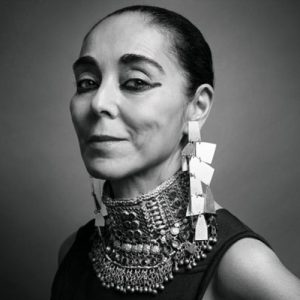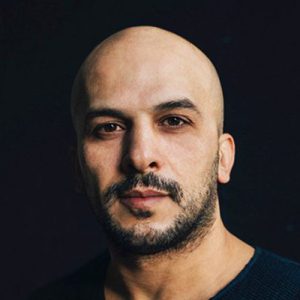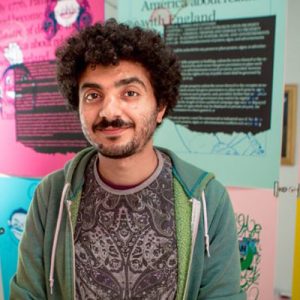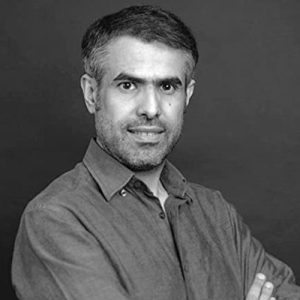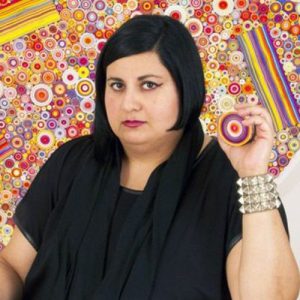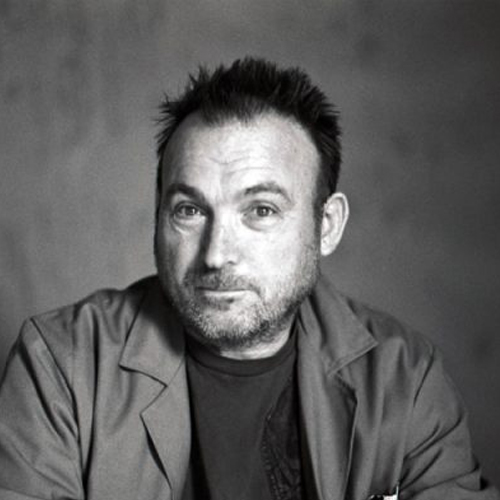
Catalan artist Miquel Barceló was born in Felanitx, Mallorca, in 1957. His mother, a painter of traditional Majorquin landscape painting, brought him to art. In 1974 he travelled for the first time to Paris, where he discovered the work of Paul Klee, Wols, Dubuffet, and the Art Brut. After having studied at the Arts and Crafts School of Palma de Mallorca, he enrolled at the Fine Arts School of Barcelona in 1975. A year later he returned to Mallorca to participate in the happenings and actions of protest by the group Taller Lunatic, a conceptual avant-garde collective. All of a sudden set free by the changed political circumstances after Franco’s death, they felt an impulse to reexperience all they had gleaned from demonstrations of vanguardism both in European capitals and the United States. He also took part in the creation of their artist periodical Neon de Suro (21 issues from 1957–1982), another counter-reaction to the common belief in the 1970ies that painting was dead.
A year after his return to Mallorca he had his first one-man show at the Palma Museum. Initially the avant-garde, art brut and American abstract expressionism (e.g. Pollock had a big impact on him) influenced Barceló’s work, although he was always particularly interested in the Baroque paintings of the great masters Velazquez, Tintoretto and Rembrandt. Dubuffet, who saw himself as a true anarchist, or the earthly materiality of the Catalan painters like Tapiés or Miró inspired Barceló in adopting an experimental attitude. Soon he found his own way of expression by simplifying and reducing different
“-isms” of the last decades and reformulating themes and technical challenges, but he has never abandoned the sanctified rules of the conventional painting such as the “chiaroscuro” for example. He believes strongly in his continuation of a grand tradition.
Within the impressions and influences of various cultures and multifaceted landscapes, his treatment of some of the great themes of classical painting, like landscape, still life, the artist’s studio or the portrait, and technical challenges, like perspective, colour, the treatment of light and composition, is recurrent. His painting from memory includes autobiographical quotations in a boundless exploration of new forms of expression, in which he extensively experiments with a wide range of materials, rich textures, light, colour and pictorial procedures, with the mutation of the elements, liquefaction of objects and their transitoriness through fading away, metamorphosis and death. Always remaining in the natural world, he experiments with both anorganic and organic material or elements. Alongside the exploration of new motifs, a further consistently recurring theme is the sea – suggesting that Mallorca is always with him – which he approached with changing perspectives, colours and light. His work on paper, paintings, modelled work, sculptures and ceramics seem to be interconnected in a way that transcends time and space, even though they are always related to certain spatial and temporal coordinates. An unconscious link between his preoccupations, fantasies and disclosures give his art a narrative and aesthetical unity and coherence.
Throughout the 1980s, he travelled extensively across Europe, the United States and West Africa – always returning to Paris, which became a second home and where he set up a second studio in 1983. By the late 1980s, he abandoned the narrative elements in his paintings, leading to a first series of white desert paintings begun after his first trip to Mali in 1988, where he installed a third studio in Segou. The most important trip to Africa was in 1991, traveling from Abidjan, Côte d’Ivoire to Ouagadougou, Burkina Fasoto Ségou, Mali. Having built a dugout canoe, he covered a distance of 1400 kilometres on the Niger and Bani river. The time Barceló spent in different countries, his nomadism or peripatetic habits essentially influenced and inspired his work, most strongly the impressions of West Africa: the power of its light, the scorching sun, the rocky landscape, the sea and rivers – visual experiences that may have reminded him of his native Mallorca. However, due to political reasons he stopped travelling to Mali in 2011.
In 1981 he participated in the exhibition Otras figuarciones at the La Caixa Foundation in Madrid, where Rudi Fuchs discovered his work and invited him to contribute to the upcoming Documenta. His participation as the only Spanish artist at the Documenta VII, Kassel, Germany, in 1982 gained him international recognition. From the mid-eighties on, Barceló’s work (paintings, drawings, sculptures and ceramics) has been subject of numerous shows worldwide in renowned galleries, important museums and at other cultural sites. His work was received as being part of the international neo-expressionist movement, rejecting the predominant trend stating the death of the painting.
It was the commission to create a poster for the Nîmes Bullfighting Festival in 1988 that inspired Barceló to create a first series of bullfight paintings in 1990. What happens on the sand during the bullfight is what he wanted to bring onto the canvas – traces of what happened. Taking up this until today recurring theme, the artist joined a tradition of Spanish painters from de Goya to Picasso or Dalí. And in 2012 Barceló ultimately created the official poster for Barcelona’s last bullfight, burying an almost 700 years old tradition.
The artist started working on bronze sculptures in 1989. His giant sculpture Gran elefantdret from 2008 has been shown around the world in public spaces such as the Palais des Papes in Avignon, the Union Square in New York, the Plaza Mayor in Salamanca, the Regent’s Park in London, and at the Paradeplatz in Zurich. Another important material for the artist is clay. The first ceramic sculptures date from 1994.
Barceló’s creativity was in demand for a lot of opportunities. His first architectural project was in 1986 when he was commissioned to paint the dome of a theatre space at the Mercat de les Flors in the Barcelona City Hall. A series of ritual icons for the church Sant Eulalia, Church of the Catalans in Palermo, Sicily, was executed in 1998. In 2002/2003 Barceló almost entirely lined the chapel of St. Peter of the cathedral La Seu in Palma de Mallorca with ceramic works. He was using ceramics not as objects but for the formation of a crafted mural of approximately 300m2. Barceló covered the entire chapel with terracotta, creating a kind of second skin and decorating it with images related to the sixth chapter of the Gospel of St. John, the miracle of the multiplication of bread and fish, a theme chosen because the chapel is dedicated to the holy sacrament of the Last Supper. In 2008 was the inauguration of his enormous ceiling painting in the Human Rights Council room at UN in Geneva. For this he covered the enormous 1300m2 ellipsoidal dome with over one hundred tonnes of luminous paint generating a stalactite ceiling.
In 1990 he designed the costumes and stage for Manuel De Falla’s opera Tréteaux de Maître Pierre at the Opéra Comique in Paris.
Barceló also made diverse book-illustrations. In 1992 he illustrated the novella Too far from home by Paul Bowles, which was inspired from the artist’s life in Gao. His watercolours, illustrating Dante’s Divina Commedia, were shown in 2005 at the Louvre Museum in Paris. Thus, he became the youngest artist ever shown in this museum. During a trip to India and Himalaya in 2017, he executed illustrations for the 1st volume of Goethe’s Faust and in 2020 The Metamorphosis by Kafka for the French editor Gallimard.
His award-winning performance Paso doble, developed with his friend choreographer Joseph Nadj, was shown for the first time at the Festival of Avignon in 2006, since then they were invited to stage it numerous times in major cities. The performance La imágen fantasma was created in 2016 and is accompanied by musician and composer Pascal Comelade.
In 2017 the artist received the honoris causa doctorate by the University of Salamanca for which he was commissioned in 2015 to create the logo of its eighth centennial.
Bruno Bischofberger and Barceló met for the first time in 1983 in Naples, Italy. Since 1984 Galerie Bruno Bischofberger has been representing the artist exclusively worldwide.
Miquel Barceló currently lives and works in Paris and Mallorca.



 Argoon Art | Sell online in the simplest way possible
Argoon Art | Sell online in the simplest way possible
